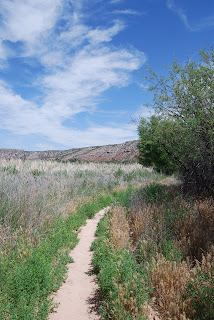


 RIO SALADO HABITAT RESTORATION PROJECT
RIO SALADO HABITAT RESTORATION PROJECTJust two miles south of downtown Phoenix, where the Salt River once flowed, a former dumping ground has been transformed into a thriving 595-acre oasis in the desert. With the cooperation of the Army Corps of Engineers, the Flood Control District of Maricopa County and droves of volunteers, tons of waste were cleared out of the Salt River channel and replaced with ponds, waterfalls and tens of thousands of indigenous plant species. Although the 5-mile-long strip of riparian habitat looks as if it occurred naturally, it’s actually a “demonstration wetland” that was created by tapping into the groundwater beneath the river channel and pumping more than 2.65 million gallons of water per day to sustain the habitat. Stretching from 19th Avenue to 16th Street, the project is a work in progress. The Central Avenue gateway is currently the most complete segment and there’s parking, interpretive signage, restrooms and drinking water. Trail segments are organized to feature specific desert habitats such as Cottonwood-Willow, Lower Sonoran, Mesquite Bosque and Palo Verde. Although just a few years old, the plants—which were harvested from seeds or cuttings within a half-mile of the Salt River—are already flourishing and attracting wildlife. Snowy Egrets, raptors, toads and dozens of other species have settled in. Future plans for the project include adding more gateways to access the more than 10 miles of paved and dirt trails and an Audubon Nature Center.
LENGTH: about 10 miles of paved and dirt trails are planned. As of 0506, about 3 miles of established trails are open.
RATING: easy and informative
ELEVATION GAIN: 50 feet
GETTING THERE:From Phoenix. Drive south on Central Avenue through downtown. Just past the I-17 underpass, look for the obvious parking area on the leftAlternate routes:
From the east Valley, take Highway 60 west and connect to I-17. Exit I-17 at 7th Street. Go south on 7th Street to Broadway Road. Turn right (west) on Broadway Road and continue to Central Avenue. Turn right onto Central Avenue and head north for about 1 mile to the gateway.
From the west Valley, take I-10 to I-17 and exit at 7th Avenue. Go south on 7th Avenue to Broadway Road. Turn left (east) onto Broadway Road and go to Central Avenue. Turn left (north) onto Central Avenue and continue for about a mile to the gateway on the right.















































